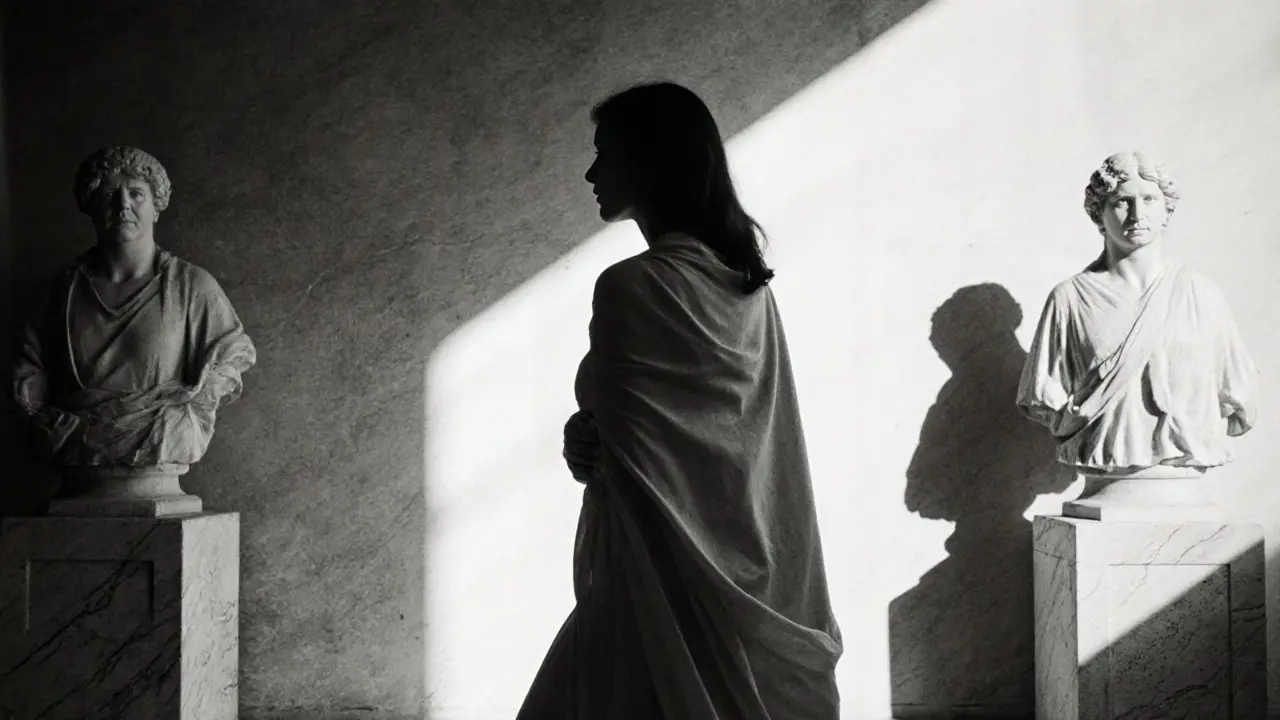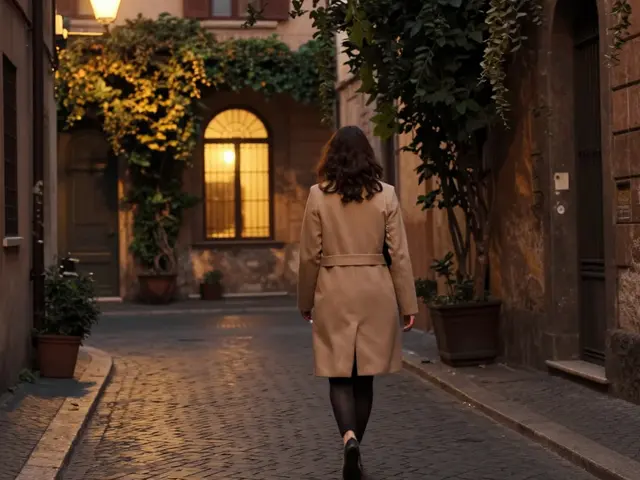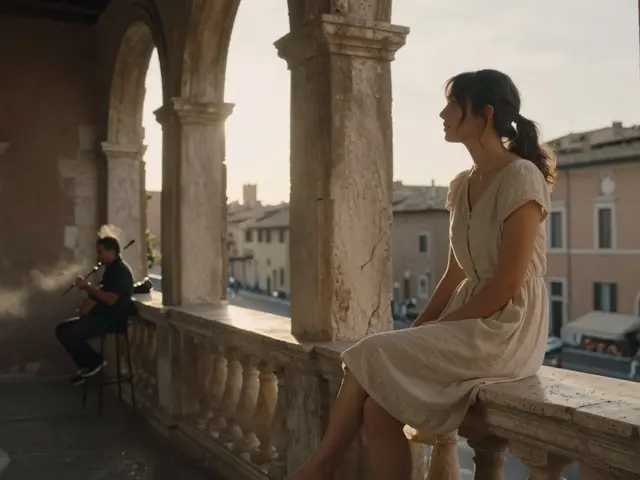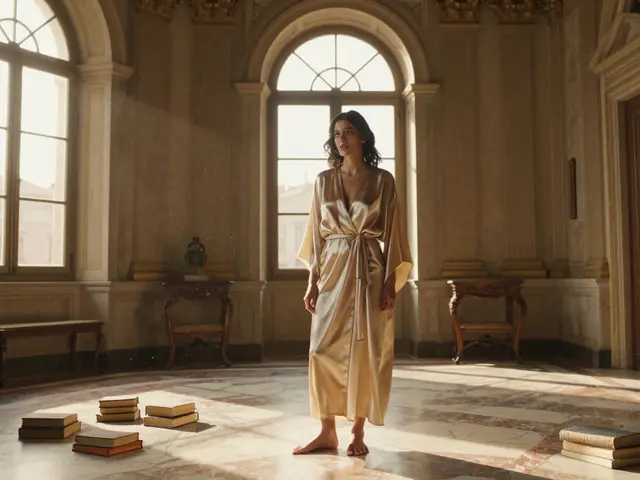Silvia Dellai didn’t wake up one day and decide to become a name people whisper about in Rome. Her story isn’t about glamour or gossip-it’s about grit, choice, and the quiet courage it takes to walk a path most won’t even name out loud.
She Wasn’t Looking for Fame
Silvia grew up in a small apartment near Trastevere, the kind of neighborhood where everyone knows your name but no one asks too many questions. Her mother worked double shifts at a local pharmacy. Her father was gone before she turned ten. School was a refuge, not a promise. By 18, she was working as a waitress, saving every euro for art school. She loved painting. Loved the way light hit marble in the Colosseum at sunset. Loved the silence between brushstrokes.
Then came the offer. Not from a casting agent. Not from a magazine. From a friend of a friend who ran a small photography studio in Monti. They needed a model for a private art project. No nudity. No exposure. Just light, shadow, and expression. She said yes-not because she wanted to be seen, but because she needed the money. That session turned into ten. Then twenty. Then a portfolio. Then a name.
The Line Between Art and Industry
Silvia never called herself an escort. She called herself a model. And for years, that distinction mattered. She worked with photographers, sculptors, filmmakers-people who saw her as a muse, not a commodity. She posed for exhibitions in Florence and Milan. One of her portraits, titled La Donna di Roma, hung in a gallery near Piazza Navona for six months. Critics called it ‘a quiet rebellion against the hyper-sexualized image of Italian women.’
But the lines blurred fast. As her name grew, so did the requests. Men came with envelopes full of cash, asking for dinner, for company, for silence in a hotel room. She turned down most. But not all. There were nights she went because she was tired of being broke. Nights she went because she felt invisible in the daylight. Nights she went because she realized she could control the terms-and that was power.
What No One Talks About
Most articles about women like Silvia focus on danger, exploitation, or redemption. None of those fit. There was no pimp. No trafficker. No rescue. Just a woman making decisions in a city that doesn’t make it easy to survive without selling something.
She kept a journal. Not for publication. Just for herself. In it, she wrote: ‘They think I’m selling my body. I’m selling my time. And I’m choosing how to spend it.’
She paid her sister’s tuition with money earned in Rome. She bought her mother a new fridge. She rented a studio with real windows and painted every morning before anyone woke up. She never told her mother where the money came from. Her mother assumed she worked in fashion.

The Turning Point
In 2021, she was photographed leaving a luxury apartment in Parioli. The image went viral. Tabloids called her ‘Rome’s Most Expensive Secret.’ Influencers tried to copy her style. Men sent her DMs offering ‘exclusive access.’ She didn’t respond. But she started saying no more often.
By 2023, she had stopped taking new clients. She opened a small studio in Trastevere-just a room with a table, a few canvases, and a sign that read: ‘Portraits by Appointment.’ She taught women how to pose for themselves-not for men, not for cameras, but for their own reflection. Some came broke. Some came broken. She didn’t charge them. She asked only that they tell her their story.
What She’s Doing Now
Today, Silvia Dellai doesn’t appear in magazines. She doesn’t post selfies. She doesn’t have a public Instagram. But if you walk into her studio on a Tuesday afternoon, you might find her helping a 19-year-old from Nigeria learn how to hold her chin just right so her eyes don’t look afraid in the mirror.
Her paintings are still quiet. Still full of light. Still full of silence. But now, they have names. La Sopravvissuta. La Scelta. Non Sono Una Vittima.
She doesn’t need to be famous. She just needed to be free.

Why Her Story Matters
Silvia’s life isn’t a cautionary tale. It’s not a fantasy. It’s not even a success story in the traditional sense. It’s a real story-messy, complicated, and deeply human. It’s the story of a woman who refused to let the world define her by the one thing she sold.
She didn’t escape her past. She reclaimed it.
What People Get Wrong
People assume women like Silvia are trapped. That they’re victims of circumstance. That they need saving.
But Silvia never asked to be saved. She asked to be seen.
She didn’t want pity. She wanted respect.
And in a city like Rome-where history is carved into every stone, where beauty is commodified, where women are either saints or sinners-choosing to be neither? That’s the quietest kind of revolution.
Her Legacy Isn’t in the Photos
It’s in the women she’s helped. In the art she’s made. In the silence she’s reclaimed.
She didn’t leave Rome. She changed it.









